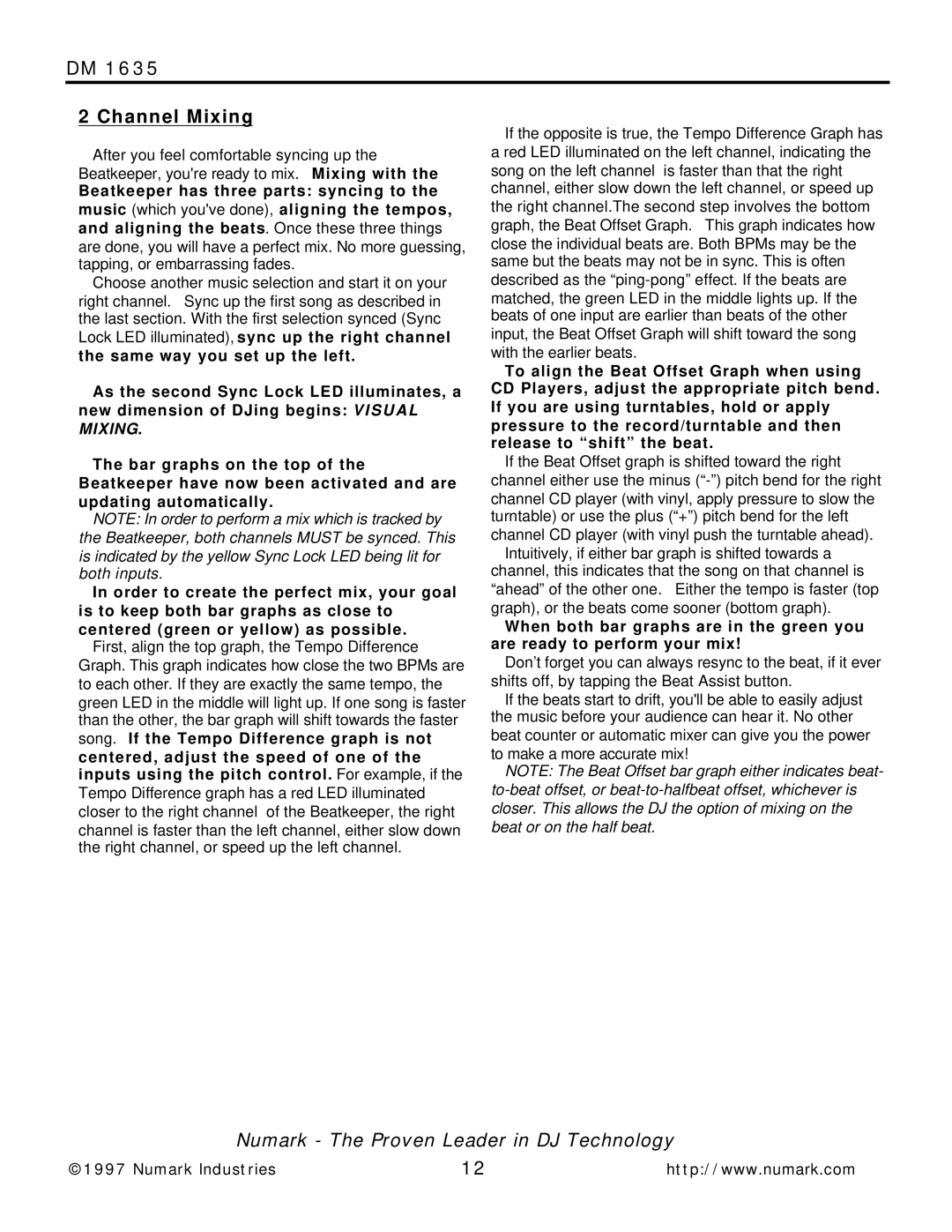DM1635 specifications
The Numark Industries DM1635 is a standout in the realm of professional audio mixers, seamlessly combining user-friendly design with robust functionality. It is specifically tailored for DJs and audio enthusiasts who require a reliable and high-performing device for live performances, recording, and broadcasting.One of the DM1635's main features is its 16-channel capability, allowing users to connect various audio sources simultaneously. This flexibility is crucial in live settings where multiple inputs might be needed. Each channel is equipped with a dedicated gain control, ensuring that users can achieve optimal levels without distortion or interference.
The mixer also boasts an intuitive layout, highlighted by its large, responsive faders, which provide precise control over audio levels. The presence of a 3-band EQ on each channel allows for fine-tuning frequencies—low, mid, and high—resulting in a more tailored sound output. This feature is especially valuable for DJs looking to manipulate their mixes and create unique audio experiences.
In terms of connectivity, the DM1635 does not disappoint. It includes balanced XLR outputs, TRS outputs, and multiple auxiliary sends. This extensive range of connectivity options enables seamless integration with various audio equipment, making it a versatile tool for different setups. Additionally, USB connectivity allows for easy recording and playback on digital audio workstations, expanding its utility even further.
Technology-wise, the DM1635 incorporates advanced DSP effects, which can enhance the overall sound quality during performances. These effects can be applied in real-time, providing DJs and sound engineers the ability to add depth and texture to their mixes. The built-in visual metering aids in maintaining levels, ensuring that users can monitor their audio output effectively.
Another noteworthy characteristic is its durable construction. Designed with mobility in mind, the DM1635 is lightweight yet built to withstand the rigors of travel and live performances. Its compact size makes it easy to transport, while the solid chassis ensures longevity.
Overall, the Numark Industries DM1635 mixer represents a strong choice for audio professionals seeking performance, versatility, and reliability in their equipment. Its blend of features, cutting-edge technology, and practical design make it an essential tool in the toolkit of any modern DJ or audio technician.
